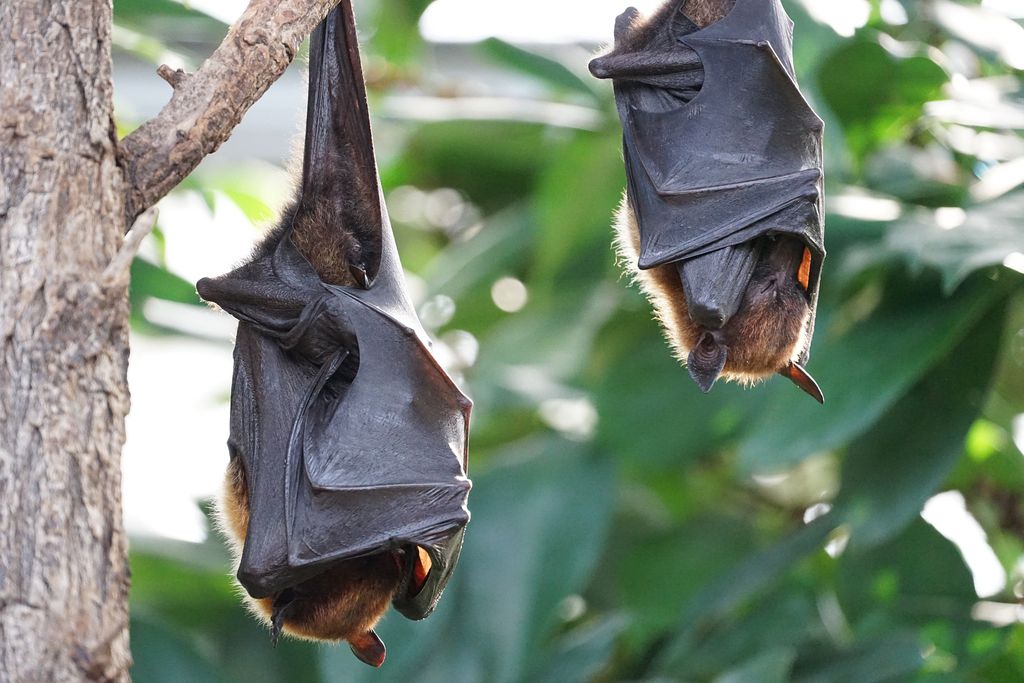Global greenhouse gas emissions over the last century have made southern China a “meeting point” for bat-borne coronaviruses (CoV) by driving the growth of forest habitat most conducive to the growth of bat populations . Bats are the likely zoonotic origin of several coronaviruses that infect humans, including SARS-CoV-1 and SARS-CoV-2, which have caused large-scale epidemics.
A new study published in the journal Science of the Total Environment provides the first evidence of a mechanism by which climate change may have played a direct role in the emergence of SARS-CoV-2, the virus responsible for the COVID-19 pandemic.
The study published May 1 revealed large-scale changes in vegetation type in the Yunnan province of southern China and adjacent regions in Myanmar and Laos over the course of the XNUMXth century.
Climate change, including increases in temperature, sunlight and atmospheric carbon dioxide, which affect the growth of plants and trees, have altered natural habitats, from tropical shrubs to tropical savannas and deciduous (deciduous) forests. This created an enabling environment for many bat species that predominantly live in forests.
The number and species of coronaviruses in a given area is closely linked to the number of different bat species present. The now-published study found that over 40 bat species "moved" to Yunnan province in southern China in the last century, harboring about 100+ different types of coronaviruses. This “global hotspot” is the region where the genetic data obtained suggest that SARS-CoV-2 may have emerged.
"The climate change of the last century has made habitat in southern China's Yunnan province suitable for more bat species," said Robert Beyer, a researcher in the Department of Zoology at Cambridge University and the study's first author.
Beyer adds in a statement: "Understanding how the global distribution of bat species has changed as a result of climate change could be an important step in identifying the primary source of the COVID-19 outbreak."
To obtain these results, the researchers created a vegetation map of the world as it was a century ago, using records of temperature, precipitation and cloudiness. They then used information on the vegetation needs of bat species around the world to determine the global distribution of each species in the early 1900s.
Comparison with current distributions allowed them to see how the number of different bat species has changed around the world over the last century due to climate change.
“As climate change has altered habitats, species have left some areas and moved to others, taking their viruses with them. This not only changed the regions where the viruses are present, but very likely allowed new interactions between animals and viruses, causing the transmission and evolution of more harmful viruses”, explains Beyer.
The world's bat population carries around 3 different types of coronaviruses, with each bat species harboring an average of 2,7 coronaviruses, most without showing any symptoms.
An increase in the number of bat species in a given region, driven by climate change, could increase the likelihood that a coronavirus harmful to humans is present, transmitted, or evolved there.
Most bat-borne coronaviruses cannot pass directly to humans. But it is very likely that several coronaviruses known to infect humans have originated in bats, including three that can cause human fatalities: Middle East Respiratory Syndrome (MERS) CoV, and Acute Respiratory Syndrome (SARS) CoV-1 and CoV- two.
The region identified by the study as a hinge point for increased bat species richness due to climate change is also home to pangolins, which the scientific community suggests acted as intermediate hosts of SARS-CoV-2.
It is likely that the virus jumped from bats to these animals, which were then sold at a wildlife market in Wuhan, where the initial human outbreak occurred, as is known to this day.
The researchers refer to previous studies that urge policy makers to recognize the role of climate change in viral disease outbreaks, and to address climate change as part of COVID-19's economic recovery programs.
“The COVID-19 pandemic caused tremendous social and economic damage. Governments must seize the opportunity to reduce the health risks of infectious diseases, taking decisive measures to mitigate climate change”, says Professor Andrea Manica, from the Department of Zoology at the University of Cambridge, who was also involved in the study.
“The fact that climate change could accelerate the transmission of pathogens from wildlife to humans should be an urgent warning to reduce global emissions,” adds Professor Camilo Mora of the University of Hawaii in Manoa, who initiated the project.
Researchers underscore the need to limit the expansion of urban areas, farmland and hunting grounds into natural habitats to reduce contact between humans and disease-carrying animals.
The study also shows that, over the last century, climate change has also driven the increase in the number of bat species in regions of Central Africa, and scattered patches in Central and South America.
Author: António Piedade is a Biochemist





















Comments